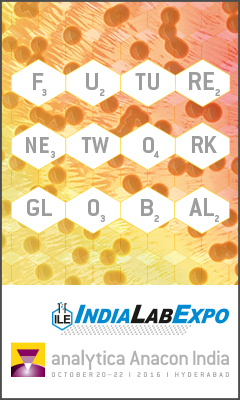|
L&Mint-int-4-2015
Metal-organic frameworks: record-breakers in porosityThe search for endless emptiness - von Prof. Dr Stefan Kaskel
In recent years, metal-organic frameworks have been setting one record after another in relation to specific surface area, with over 7,000m2/g now being achievable. Their modular construction and the large number of functionalities that can be built into the lattice make them both interesting and highly promising for a wide variety of applications.

Developing bio-based carrier systems for gene transferGenes on sugar - von Prof. Dr Dagmar Fischer, Prof. Dr Thomas Heinze
The targeted transport of DNA and RNA using vectors (mostly made from synthetic polymers) in cell cultures has become part of routine practice in biological R&D – a fact highlighted by the multitude of commercial kits now available. To date, however, obstacles relating to use in patients have beset many laboratory studies and – in particular – the transfer to clinical practice. In many cases, such issues are related to safety concerns and limited...
 From fat droplets in plant cells to novel foodsFunctional nanoparticles - von Dr Birgitta Zielbauer, Prof. Behic Mert, Prof. Thomas Vilgis
Occurring naturally in oilseeds, oleosomes are particles with special properties. Depending on the plant variety, their size ranges from microns down into the nanoscale. These particles, with their protein-functionalized surfaces, are structurally very stable indeed. This makes them relevant for fundamental research and pharmacology, and also for innovative applications in food science.
 How biopharmaceutical drug substances use the nose as a pathway to the brainBehind the doorman’s back - von Johannes Flamm, Stefan Carle, Martina Stützle, Prof. Dr. Katharina Schindowski Zimmermann
According to WHO estimates, over 1 billion people worldwide suffer from disorders of the central nervous system (CNS). Some of the most familiar are Alzheimer’s, Parkinson’s and multiple sclerosis. Although they have long been the focus of research, effective pharmacotherapies are still unavailable for many of these diseases. What is it about CNS disorders that makes it especially difficult to develop drug products that target pathophysiological...
 |
L&M int. 4 / 2015
|














